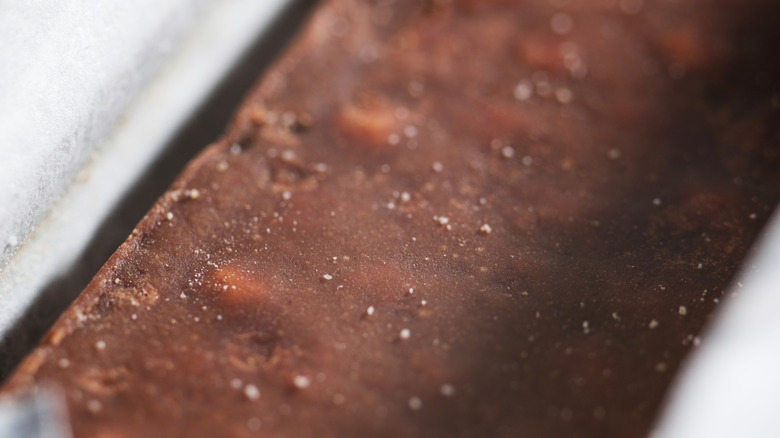Why Covering Chocolate While It's Tempering Is A Major Mistake
Making a batch of chocolate-dipped strawberries? To achieve the inviting glossy sheen found on store-bought treats, you'll need to master the art of tempering your chocolate. Just bear one thing in mind: Never cover your chocolate while it's tempering or setting otherwise it can create an unwanted white residue on the surface called a bloom.
Melting and cooling chocolate for tempering purposes can be hit and miss if you haven't done it before. Heat it for too long and it can easily scorch and take on a burnt smell or seize up and turn into an unusable grainy mass that's no use for coating homemade truffles. On the other hand, fail to cool it down swiftly and it won't have that characteristic snap. This is why using a thermometer is key. You'll need to melt your chocolate, cool it down, and heat it again (each time reaching a very specific temperature) to temper it correctly. Once you've used this tempered chocolate to coat candies, mold into bars, or create a shell for cakes and desserts, you should leave it uncovered to encourage the air to flow around it. Restricting the airflow by placing your treats in a lidded container will cause the surface to develop a white or greyish coating, known as a bloom in professional chocolatier circles. While bloomed chocolate is safe to eat, it doesn't look appealing, so always leave your prepared chocolate treats uncovered as they cool and set.
Why does chocolate bloom?
Chocolate blooms when the fat content of the cocoa butter is exposed to a sudden uncontrolled temperature change, causing it to separate. This fat ends up on the surface of the chocolate and makes it look white, patchy, or streaked. Aside from this unsightly aesthetic issue, blooming can also cause chocolate to develop a crumbly texture rather than a satisfying snap, which can be a bummer if you've worked hard to make chocolate bonbons in a silicone mold. Covering your chocolate and reducing the movement of the air around it while it's tempering and setting hampers its ability to cool down swiftly and can leave you wondering why your chocolate bar looks dusty despite putting all that effort into melting and cooling it properly.
You should also avoid storing your homemade chocolates in the freezer or fridge as the sudden change in temperature can cause condensation, resulting in a phenomenon known as sugar bloom (the sugars in the chocolate absorb the moisture, rise up to the surface and recrystallize). If you've opened a store-bought bar of chocolate and it looks powdery even though it's well within its expiry date, you can reverse chocolate bloom by melting it down again and setting it in a mold.

